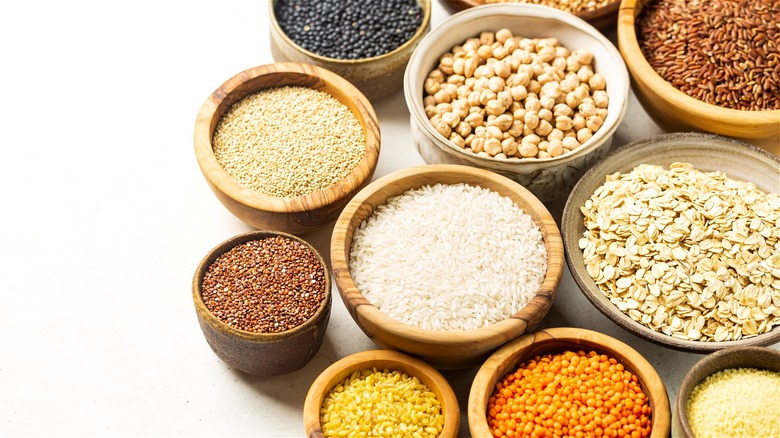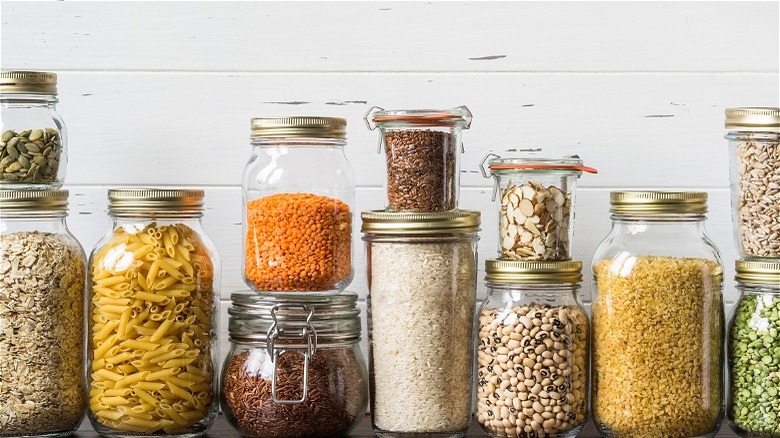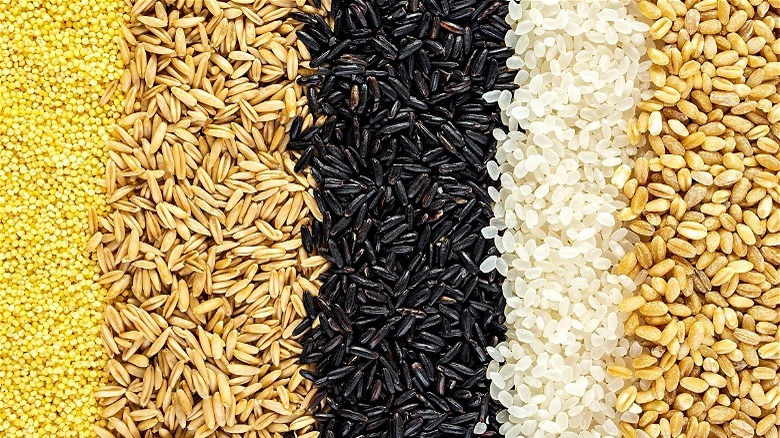What's The Difference Between Couscous And Rice?
While most adults may know the significance of adding enough grains to their daily food consumption, there's still a plethora of differences in a sea of choices. According to the USDA, "any food made from wheat, rice, oats, cornmeal, barley, or another cereal grain" falls into the grains category, but the makeup and nutritional content of each vary significantly.
No one is arguing over the popularity of rice as a standard grain option, with about 509.87 million metric tons of rice consumed in 2021, via Statista. But how other grains measure against the ubiquitous staple proves to be quite interesting. Quinoa has garnered mass attention over the years due to its superfood generation of all essential amino acids, per The New York Times. Then there's couscous, which looks and even feels like rice but its general makeup may suggest otherwise. So what's the deal? Are rice and couscous similar or more different than you assume?
The contrasting qualities of couscous and rice
Rice is a grain grown from "semi-aquatic grass" and harvested after being heavily irrigated, then drained, and dried out over a period of time, per USA Rice. According to The Washington Post, couscous doesn't grow from the ground but instead is formed by hand from semolina wheat and water into minuscule beads and then steamed in a small amount of water until fluffy. There are different types of couscous, and Food Fun Travel explains that Israeli couscous is typically larger in size than the mass-produced couscous you're familiar with.
Standard couscous is much smaller and made from parts of the durum wheat kernel, mixed with water, says Food Fun Travel. The standard commercial variety also doesn't have a buoyant texture like the larger granules of Israeli couscous, or the barley variety, via Sous Chef. While The New York Times deems couscous "North Africa's answer to pasta," it deserves to live in its own unique category. While rice and couscous are produced differently, how do they compare nutritionally?
Nutritional differences
According to Healthline, brown rice is considered a whole grain and contains more fiber and antioxidants than white rice. Since white rice is the most preferred among Americans, per Healthline, let's look at a nutritional comparison of enriched white rice and commercially-sourced couscous.
According to data from the USDA, every 100 grams of couscous has more protein and more fiber than white rice, via Souper Sage. One cup of white rice has 242 calories and one cup of couscous has 176 calories with the carbohydrate content posing 47% higher for white rice. According to Health, enriched white rice usually has added B vitamins and minerals since the bran and embryo are removed from the grain in its production.
While the comparison of enriched white rice and standard couscous appear similar, the best options for grain consumption are whole grain products, per Oldways Whole Grain Council. Some healthy alternatives are brown and wild rice or whole wheat pearl couscous, which is made with only whole wheat flour and water, per Bob's Red Mill. Whichever grain variety you choose to enjoy, each has its own distinct taste and associated health benefits.


